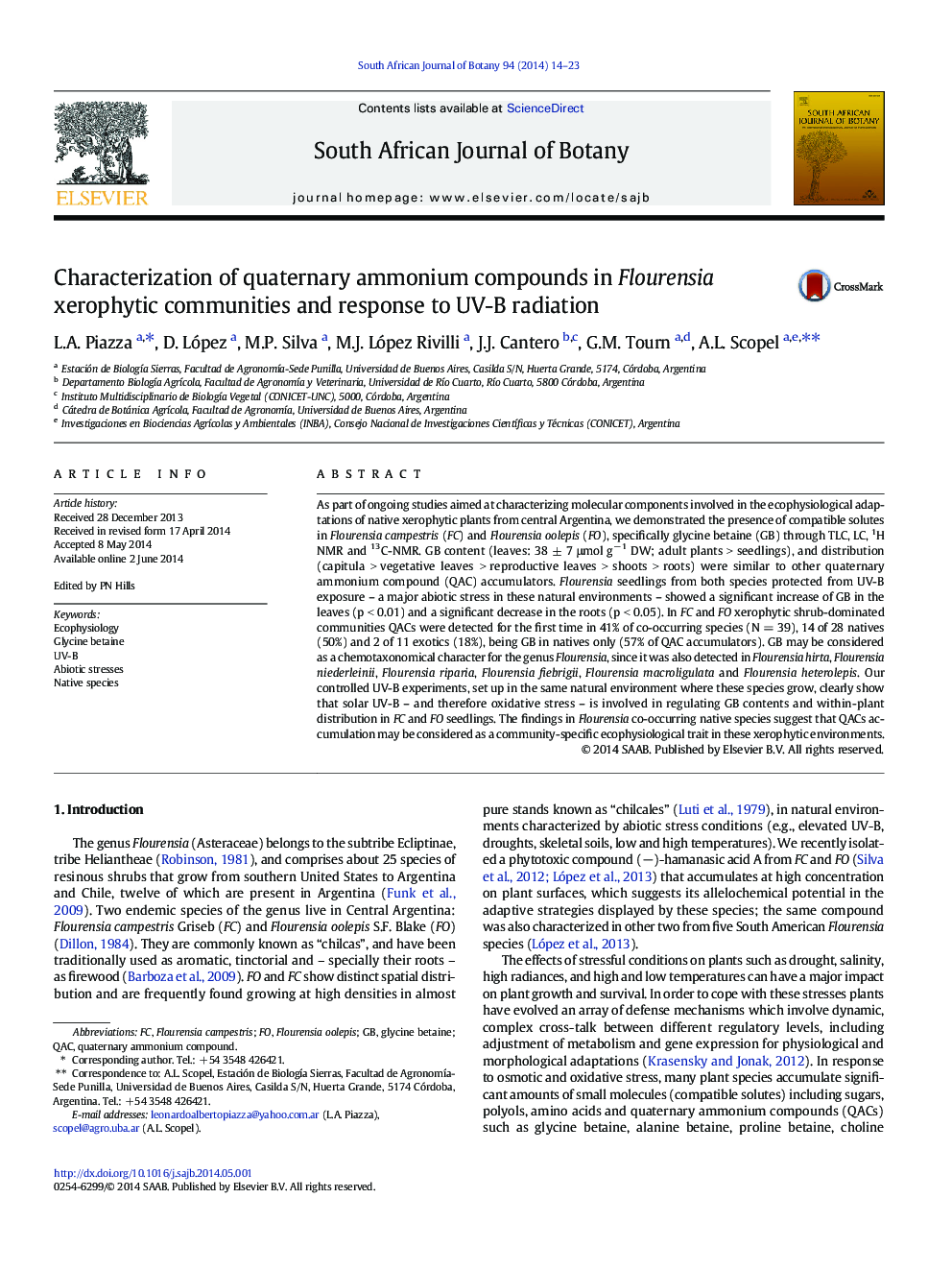| Article ID | Journal | Published Year | Pages | File Type |
|---|---|---|---|---|
| 4520658 | South African Journal of Botany | 2014 | 10 Pages |
•Flourensia campestris and F. oolepis are typical glycine betaine (GB) accumulators.•GB is proposed as the first chemotaxonomical marker for the genus Flourensia.•Solar UV-B decreases GB accumulation in Flourensia leaves and increases it in roots.•GB acts as a community-specific ecophysiological trait in xerophytic environments.
As part of ongoing studies aimed at characterizing molecular components involved in the ecophysiological adaptations of native xerophytic plants from central Argentina, we demonstrated the presence of compatible solutes in Flourensia campestris (FC) and Flourensia oolepis (FO), specifically glycine betaine (GB) through TLC, LC, 1H NMR and 13C-NMR. GB content (leaves: 38 ± 7 μmol g− 1 DW; adult plants > seedlings), and distribution (capitula > vegetative leaves > reproductive leaves > shoots > roots) were similar to other quaternary ammonium compound (QAC) accumulators. Flourensia seedlings from both species protected from UV-B exposure – a major abiotic stress in these natural environments – showed a significant increase of GB in the leaves (p < 0.01) and a significant decrease in the roots (p < 0.05). In FC and FO xerophytic shrub-dominated communities QACs were detected for the first time in 41% of co-occurring species (N = 39), 14 of 28 natives (50%) and 2 of 11 exotics (18%), being GB in natives only (57% of QAC accumulators). GB may be considered as a chemotaxonomical character for the genus Flourensia, since it was also detected in Flourensia hirta, Flourensia niederleinii, Flourensia riparia, Flourensia fiebrigii, Flourensia macroligulata and Flourensia heterolepis. Our controlled UV-B experiments, set up in the same natural environment where these species grow, clearly show that solar UV-B – and therefore oxidative stress – is involved in regulating GB contents and within-plant distribution in FC and FO seedlings. The findings in Flourensia co-occurring native species suggest that QACs accumulation may be considered as a community-specific ecophysiological trait in these xerophytic environments.
